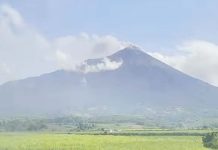
ILOILO City – To make disaster preparedness more accessible and culturally grounded, the Philippine Institute of Volcanology and Seismology (Phivolcs) has turned over Hiligaynon-language sourcebooks on earthquake and volcanic hazards to the University of the Philippines Visayas (UPV) and other local stakeholders.
Unlike traditional technical manuals, these new sourcebooks — products of the DANAS (Disaster Narratives) Project — are written in the local language and draw from lived experiences, allowing communities in the Visayas and Mindanao to better understand the science behind natural hazards in a more relatable way.
“We really hope that you will be able to use these materials in various ways. We encourage all of you to actively use the materials that we developed as they were designed to be tools that can be used to significantly enhance our efforts for resilience and understanding of the various hazards,” said Phivolcs deputy director and DANAS project leader Dr. Ma. Mylene Villegas during a recent formal turnover.
UP Visayas Chancellor Clement Camposano praised the effort, calling it a step forward in bridging science and society.
“It’s absolutely crucial that those of us who do science and whose work impacts the life and immediate welfare of our communities have that capacity to connect with these communities. And there is really no other way except to take their experiences as a starting point,” he said.
Camposano emphasized that the use of local language in science communication can reshape how communities relate to hazard information, noting that government agencies and academic institutions must “learn to appreciate the role of local language and local experiences to make sense of their situation.”
The Hiligaynon sourcebooks were not only developed to explain scientific concepts but also to contextualize them using historical accounts.
Iloilo City Disaster Risk Reduction and Management Officer Donna Magno cited the 1948 magnitude 8.2 Lady Caycay earthquake as a focal point in the materials for Panay and Iloilo.
“DANAS Project aims that, through the narratives, people will understand the nature of earthquake and how to use the information based on the stories from resource persons to protect themselves from the earthquake,” she explained.
The City Government of Iloilo is set to reproduce the sourcebooks for barangay-level dissemination, according to Magno, who said the Public Information Office will take the lead in printing and distribution.
As natural hazards continue to threaten lives and infrastructure across the country, these localized materials are seen becoming critical tools in promoting grassroots resilience — not just through science, but through storytelling./PN





